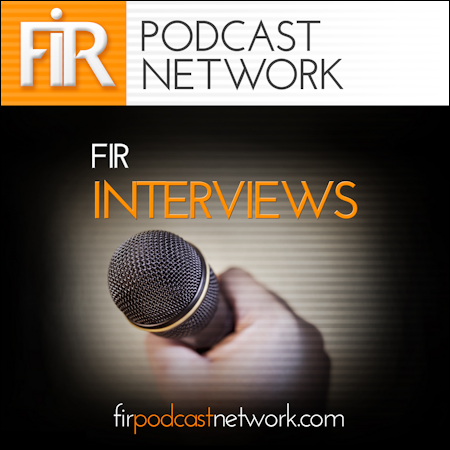In October, mobile operator EE rolled out the UK’s first 4G mobile network in selected cities across the UK.
The initial public roll-out of 4G wasn’t without some big hiccups for EE early adopters, notably as experienced and recorded by my friend Andrew Grill. What Andrew experienced, the role the social web played in how his story unfolded and broadened out into the mainstream media, and how EE responded are the primary elements that have led to a ‘social ambassador programme’ surrounding EE and 4G in which I’m participating. More on that in a minute.
EE – the company formed in 2010 from the combination of T-Mobile and Orange in the UK – offers 4G LTE mobile services in 16 cities with 17 more to come in the first quarter of 2013. EE says it wants to enable its 4G to reach 98% of the UK population by 2014.
From a user perspective, 4G is a big deal because it offers mobile broadband data speeds typically five or more times faster than 3G, the cellular service that’s currently offered across the UK by all mobile operators.
That means you can get thing done a lot faster, from simple things like Google Maps loading really quickly, YouTube video streaming without the typical stutters of 3G buffering, or your Dropbox files syncing really fast. All of that is enhanced with doing this on one of the latest LTE-enabled mobile devices with fast processors, operating systems that take full advantage of hardware and networking capabilities, lots of memory, etc.
As for network speeds, here’s what I mean – this image shows comparisons of data upload and download speeds on EE’s 4G when I was in west London last week, my home office wifi via Virgin Media’s fibre-optic broadband service, and EE’s 3G in Wokingham (where 4G hasn’t arrived yet: coming next year).

The difference between 4G and 3G is dramatic, with 4G showing around six times the download speed of 3G. As you can see, the 4G speed is comparable with the wifi speed.
Of course, these are the results of just one test and what you get in general use will vary and depend on so many factors such as time of day, cellular signal strength at your location, who else is on the network and what they’re doing, eg, streaming or downloading lots of video, maybe even the weather. But it gives you a good idea of what you can expect.
So with some of the tech outlined, what’s this ‘social ambassador programme’ I mentioned?
It’s the result of some excellent thinking by Andrew Grill, a willingness by EE to look at social media as a multi-way engagement channel, and their agreement to enable a small group of people to put EE to the test using some of the latest 4G-enabled mobile devices EE offers in the UK and talk about their experiences and what they think.
As Andrew explains in his introduction blog post:
[…] One of my strong recommendations in my meetings with EE was that they needed an advocate program – a way to reach out to a small number of influential folks in the technology and social media space in the UK and cop-opt them to help EE spread their message, and also be real advocates for those looking to join EE those who have joined ad are having issues.
Thankfully the PR team at EE agreed, and I have worked with them to develop such a program.
The programme involves five people starting out with devices provided by EE for 12 months including voice and 8Gb/month 4G data plans, all at no financial cost to us:
- Andrew Grill – Huawei E589 MiFi
- Gabrielle Laine-Peters – iPad Mini
- Paul Clarke – Samsung Galaxy Note II LTE Titanium
- Ewan MacLeod – iPad
- Neville Hobson (that’s me) – Samsung Galaxy S III LTE Titanium
Some of us were able to get together in London on December 14 to talk a little about what we’re going to do with our devices.
[At The Hospital Club in London on December 14, from left to right: Gabrielle Laine-Peters, Andrew Grill, Neville Hobson, each with a spiffy 4G shiny new object.]
Each of us has agreed specific actions we’ll do. As our watchwords for this programme are openness and transparency – we’re not pimping EE – here’s the detail:
A commitment to use the device, and to blog/tweet about your experience at least once per month.
How simpler could it be? EE want to know what we think whether our opinions are positive, neutral or negative. We may do other things, too (everyone’s nature is to want to talk about what we’re experiencing), but you can be sure that the minimum we’ve agreed to will easily be done.
So I plan to be talking about EE and my experiences using their network and services. And be sure I’ll be talking about the Samsung Galaxy S III LTE (the specific model number is GT-I9305): I already know it’s an excellent mobile device.
Read Andrew’s post for more details about the programme including an FAQ.
Related posts:














12 responses to “Putting the EE experience to the test”
Great post Neville and thanks for agreeing to be part of the EE advocate program – will be an interesting 12 months as the network rolls out, speeds increase further and competitors launch 4G
Thanks Andrew. Yes, interesting times ahead as 4G picks up steam in the UK and when other operators get cracking with it.
I’m looking forward to hearing the experiences of our fellow advocates too. I’m sure we’ll each have different perspectives. Looking forward to our get-togethers as we swap war stories :)
[…] Putting the EE experience to the test In October, mobile operator EE rolled out the UK’s first 4G mobile network in selected cities across the UK. The initial public roll-out of 4G wasn’t without some big hiccups for EE ear… […]
Very interested to see how you get on, Neville. 4G potentially a bit of a gamechanger for liveblogging and news-focused journalists such as myself. Faster online – bigger #win!
If content is king, speed in getting it must be queen :)
I hope the test involves having to make contact with their Customer Services team, Neville. I gave up after waiting over 20 minutes for them to answer and went in-store, only to be told it often took the store an hour to get through! I tweeted this and got an almost immediate response from EE saying that they were very busy but their new 4G was really fast! Not what I wanted to hear. Their response to my next tweet had two spelling errors and was again totally unhelpful, contradicting what I’d been previously told. Shocking experience.
That’s not a good experience, Jane, about the worst I’ve heard re a mobile operator. I think we’ve all had poor experiences with call centres. I could tell you tales of woe in dealing with Vodafone, for instance (recounted here).
I have already had reason to call EE’s support and, to be honest, my experience was very good. Let’s see how it holds up in the months ahead.
Jane, your experience is similar to mine. Although hopefully thanks to the EE advocate programme it is finally getting sorted as over the weekend the team sprang into action to investigate for me. Hopefully, I’ll be able to do a follow-up to “My problems with EE” blog post and report a satisfactory outcome.
Thanks Stuart. One of the points Andrew Grill made in his posts about his experiences when EE launched 4G was that they had some major back-end issues to resolve including serious disconnects in the ‘customer service supply chain,’ as one way to put it.
One thing I see with mobile operators, cable TV/internet firms and utilities like gas and electricity is that they’re businesses comprised of people in two distinct parts – the shiny new internet-focused businesses like mobile, broadband internet, digital TV, online utility management, etc; and the so-called legacy elements like telephony (ex-GPO even) with all the old attitudes along with much of the structure that takes willingness, money and time to change.
I’d lump call centres into the legacy business bucket. We already know that you tend to get a result better, and a quicker one, when you tweet a company’s tweeters rather than call the support number. None of this is perfect, though: some are better than others, and it often depends on the individual you talk to.
It’s really not good enough today and not how it should be at all.
When the concept of social business gains broader traction in business thinking, that’s when we’ll see big change. Whichever firm gets it right will make a killing in their market.
[…] Putting the EE experience to the test […]
[…] for rolling out the country’s first commercial 4G service. I’m taking part in an ambassador programme for EE, organized by Andrew […]
[…] for rolling out the country’s first commercial 4G service. I’m taking part in an ambassador programme for EE, organized by Andrew […]